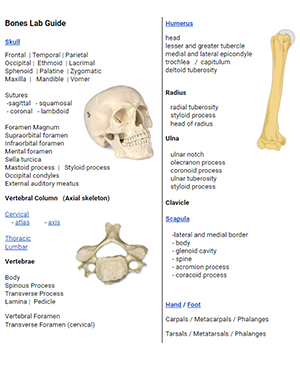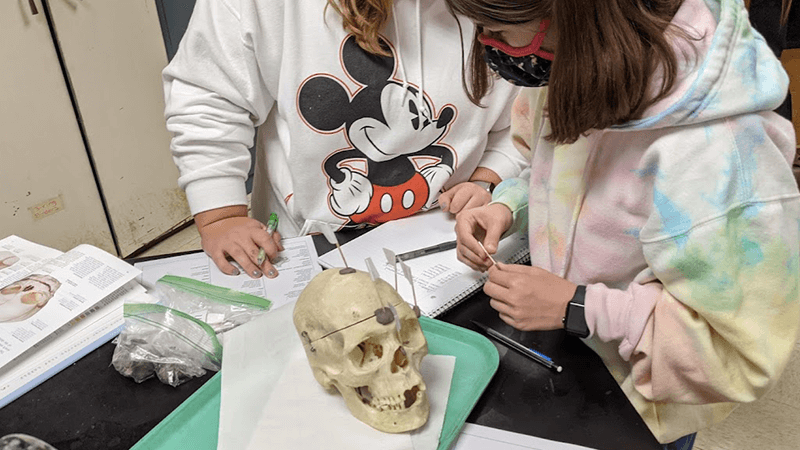
Most anatomy classes include a unit on the human skeleton. I have several disarticulated human skeletons and quite a few plastic models. Students use them to identify bones and structures on the bones. The activity as a way for students to examine diagrams on paper and then find the structures on the real bones.
Most of my collection was in my class when I was hired from the last teacher, but I have added to it so that I have enough for a class of 30. You can order a disarticulated skeleton (plastic) from Amazon for a fairly reasonable price.
A student lab guide includes a list of the bones and structures they are supposed to find on each. This list can be very intimidating for students; so many new and unfamiliar terms! The lesson isn’t just about finding the structures, but also learning skills that will serve them in programs after high school. Links to several animated versions of the bones show a 3D model that can be rotated.
For each section, students find the structures and use clay and flags to identify each. Most students stay focused because they are required to do something with the models and not just look at them Groups designate a person to upload photos to Google Classroom.

There are four roles to the teams:
- Librarian: the person who uses the text and other sources to locate structures
- Writer: the person who makes the key showing the names of each structure
- Photographer: the person who takes the photos and uploads for the group
- Manager: the person who keeps the team on task and makes decisions about the tags
Roles help students take more ownership of the task and their duties. If you have teams smaller than four, one person can do multiple jobs.
Assessment
The project takes several days, and I divide it as needed. Students might do the skull one day, the vertebrae the next, then the arms and the legs. This is another lesson in how to manage a large scale task by breaking it into smaller tasks.
I have conducted large lab practicals where all the bones are represented. Students in the past have found this test really challenging. This year, I separated it into two smaller assessments that they will take using photos posted in a Google form (quiz). I’m allowing the non-honors class to have a word bank.
To prepare for the exam, students can access to my Google Photo file which shows images of the bones with and without labels. I also use these photos to review with each bone with them at the start of class before they head to the lab.
There are virtual versions for students who miss class or need extra help. I made with Google slides where students drag and drop labels.
Students really enjoy working with the bones. At the end of the unit, they put together a full human skeleton from the bones.

